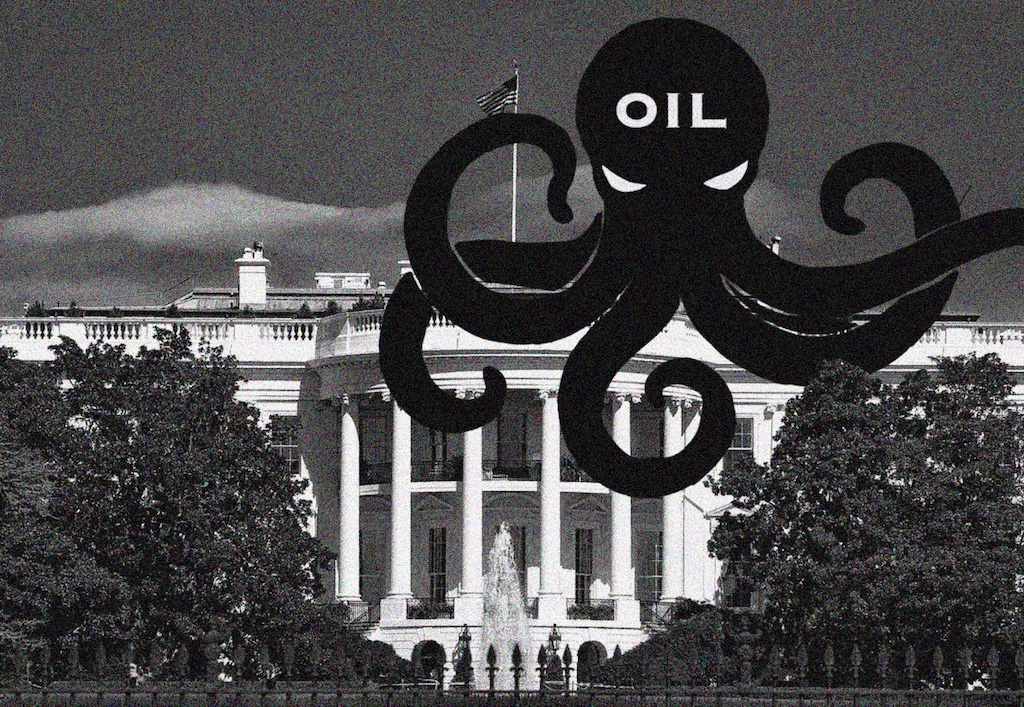A few weeks ago, President Biden drew a lot of praise from the left and a lot of scrutiny from the right when he signed the “Executive Order on Protecting Public Health and Restoring Science to Tackle the Climate Crisis.” The title including the words “Restoring Science” is subjectively pretty funny, but even with the Keystone Pipeline cancellation, many environmental activists believe the order falls short (but in Biden’s defense, no one is ever happy with compromise).
Regardless of opinions on the Order, it struck up conversations about gas prices, oil production, jobs, and other economic effects of the cancellation of the Keystone Pipeline. The Canadian “crude oil” (which eventually becomes petroleum) that was set to run through the pipeline is still going to reach its destination, it will just continue to be by rail instead of via the pipeline.
The U.S. does produce 94% of the oil it consumes, and though the largest overseas importer is Saudi Arabia, at 7%, Canada leads the way at a whopping 56%. Petroleum is still the most popular means of energy production in the U.S., at 37%, compared to coal and renewable sources (combined), both at 11%, though the use of renewables continues to rise as coal continues to fall.
Imports, Exports, and Consumption
Though Canada’s imports do make up a hefty percentage of the oil we receive from other countries, the 94% that comes from domestic production still has the most effects on gas prices, jobs, etc. making the popularity of the Keystone decision a bit overblown from an oil perspective. However, protecting U.S.-government-deemed Native land does seem like a nice nod from the ironically named “White House” after stealing most of the country a couple hundred years ago, and it’s importance shouldn’t be understated.
In 2019, the U.S. exported oil to a whopping 190 countries. For reference, there are only 195 countries. Though the Middle East exports of oil to the U.S. are much less than what most think, the desert countries do, indeed, still have a large market share in global oil sales. The U.S. provides 35% of the world’s oil, and Middle Eastern countries combine for about 38%. With that much money, it’s wild there has never been a perpetual war in the region based primarily on the oil, but portrayed to the American people as an ongoing act against terrorism to keep people safe. Phew. Asian countries actually lead the way, with 44% of the world’s crude oil exports. By country, the U.S. comes in at 6th for total exportation, behind Saudi Arabia, Russia, Iraq, Canada, and the United Arab Emirates, respectively.
If you were hoping for a U.S. win in the oil production game, don’t worry, we slay when it comes to consumption. The U.S. consumes almost 20% of the world’s oil, with all of Europe clocking in at about 15%. The second-largest single-country consumption is China, at about 14.5%.
Renewables
Though reports about the amount of crude oil left on earth vary from “Gone in 10 Years” to “Not Really Ever Gone, but Much Harder to Access” even the extremes agree that the world should slow their collective consumption, and renewable energy is the best route as far as saving the planet goes. It is also the fastest-growing energy source in the United States, and investments are aplenty (more on that in the next section).
In 2019, renewables accounted for 11% of the energy production in the U.S., split as such:
- Solar/Geothermal – 4.2% (solar is expected to be the primary source of electricity in the U.S. by 2050)
- Hydropower – 3.6% (advancements are being made in pump storage, which is pretty much a battery that stores energy created by hydro)
- Wind – 2% (the rest is split between various small-scale energy producing methods)
Companies Making Efforts to Move Away from Oil
Though the Keystone Pipeline executive order really didn’t have a big effect on U.S. oil production nor consumption, the fact that the legislation was passed is a sign of the times, and investments in renewables are both good for the environment, and good for companies’ bottom lines. Many large corporations have already made commitments to renewable energy, and for those looking into the future past the five-year mark. Here are a few companies who are already renewable-only, and some committed to doing so in the near future (these are strictly for electricity, the current primary use of renewable energy).
- Google – 100%
- Starbucks – 100%
- Microsoft – 100%
- Bank of America – 100%
- Apple – 100%
- Wells Fargo – 100%
- Boeing – 18% (it’s a start for production company)
- Cummins – 43% (they make engines. They know where the trend is headed)
- MetLife – 100%
As far as oil companies go, some have made written and verbal commitments to focusing more on renewables, and even Mother Earth’s best friend, BP, has committed to being fully renewable by 2050. We shall see!
Until then, legislation and corporate commitments seem to be the main drivers of renewable energy commitments in the United States.




